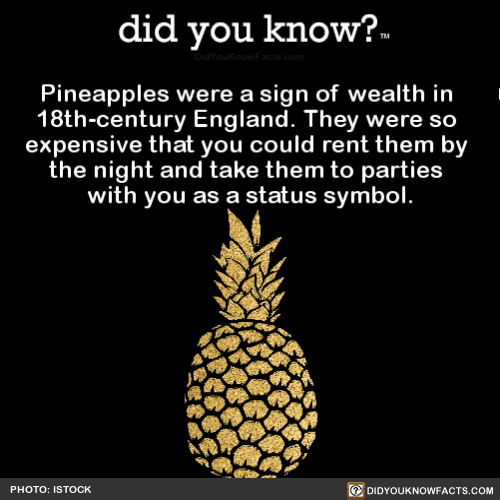It’s cold outside! Really cold!
We aren’t even into December yet, but much of the country has already seen frigid temperatures and huge snowstorms this fall.
So, predictably, some climate change deniers and skeptics have rushed out (as they are wont to do) and cried from the rooftops that global warming and climate change don’t really exist. Just look at this cold, snowy weather we’re having…right?
WRONG. These short-term bouts of unusually cold weather don’t really have any effect on long-term temperature averages. Let’s look at the reasons why.
View this post on Instagram
If you’ll recall, a polar vortex developed in early 2019 and then split apart, sending a swath of cold air to the Great Lakes region. Amy Butler, an atmospheric scientist at the Cooperative Institute for Research in Environmental Sciences, explained it this way, “Like a rock in a stream—in this case, the jet stream—[the polar vortex lobe] helped keep the jet stream pushed southward, which encourages cold air to be transported from Canada and the Arctic into mid-latitudes.”
The split polar vortex and other factors combined to create these cold conditions in early 2019, and some experts believed that the cold temperatures wouldn’t last long. And although the frigid conditions were uncomfortable and seemed to last a long time, the average monthly temperatures last December and January were actually above average for that time of year.
View this post on Instagram
In other words, random cold spells will always take place and weather is chaotic, but that does not mean that climate change isn’t occurring right now as we speak. Zachary Labe, a climate scientist at the University of California, Irvine, said, “The weather frequently changes from day-to-day or even hour-to-hour, while changes in our climate occur in the long-term, such as over 30 year periods. Therefore, we cannot say that one cold outbreak or weather event is evidence for or against climate change.”
And people tend to remember exceptional (read: cold) weather events rather than the normal, average days. But the fact is that winters have been warming. Over the past year, the National Oceanic and Atmospheric Administration recorded 11,404 daily record lows across the globe. But the organization also recorded 21,907 new record HIGH temperatures.
View this post on Instagram
Bob Henson, meteorologist with Weather Underground, said, “That ratio [of record highs to lows] has been getting bigger over the past few decades. Cold doesn’t go away, it’s just less frequent.”
The post Record Cold Temperatures Don’t Mean Climate Change Isn’t Taking Place appeared first on UberFacts.
 (@alwayssunnycolorado)
(@alwayssunnycolorado) Leever (@lisaleever)
Leever (@lisaleever)





 Die ganze Story zur kleinen 'Mojito' gibt es in unserem neuen Artikel (Link in Bio). Wir sind auf jeden Fall schon ganz verliebt
Die ganze Story zur kleinen 'Mojito' gibt es in unserem neuen Artikel (Link in Bio). Wir sind auf jeden Fall schon ganz verliebt  (c) Foto: Joanna Justice (Facebook) ________ #isleofdogs #isleofdogs_mag #hundeliebe #doglove #freundemitvierpfoten #hundefreunde #hundeaufinstagram #instadog #instadogs #hundeblogger #hundemagazin #weeklyfluff #fellnase #cutedog #puppylove #greenpuppy
(c) Foto: Joanna Justice (Facebook) ________ #isleofdogs #isleofdogs_mag #hundeliebe #doglove #freundemitvierpfoten #hundefreunde #hundeaufinstagram #instadog #instadogs #hundeblogger #hundemagazin #weeklyfluff #fellnase #cutedog #puppylove #greenpuppy Marcel Kusch/
Marcel Kusch/ Yup, TI the rapper said this on a podcast recently. I can’t make this up. If he would have come into my office asking for this I would have laughed in his face. But seriously, there are a lot of people that don't know that you actually can't tell if a woman is a virgin or not just based on an exam. It just doesn't exist.
Yup, TI the rapper said this on a podcast recently. I can’t make this up. If he would have come into my office asking for this I would have laughed in his face. But seriously, there are a lot of people that don't know that you actually can't tell if a woman is a virgin or not just based on an exam. It just doesn't exist. So what is the hymen? It is a thin piece of tissue that covers the opening of the vagina. The hymen can stretch or tear as a result of various behaviors, by tampon or menstrual cup use, pelvic examinations with a speculum, regular physical activity, sexual intercourse, insertion fingers or items into the vagina, and activities such as gymnastics. There are different types and shapes. When a dad puts their daughter in this predicament then she can't trust him. He is humiliating her and possibly making her hide things behind his back. In this case it is making his daughter and other women believe that sex is bad and is not healthy. Her outlook on sex is totally different now and possibly gives her a subconscious thought to thinking that controlling her is ok. She also will possibly view going to the gynecologist or any doctor for that matter as a bad experience, and that could potentially have health consequences for her future. So how do we tell if someone is a virgin or not? You ask them!
So what is the hymen? It is a thin piece of tissue that covers the opening of the vagina. The hymen can stretch or tear as a result of various behaviors, by tampon or menstrual cup use, pelvic examinations with a speculum, regular physical activity, sexual intercourse, insertion fingers or items into the vagina, and activities such as gymnastics. There are different types and shapes. When a dad puts their daughter in this predicament then she can't trust him. He is humiliating her and possibly making her hide things behind his back. In this case it is making his daughter and other women believe that sex is bad and is not healthy. Her outlook on sex is totally different now and possibly gives her a subconscious thought to thinking that controlling her is ok. She also will possibly view going to the gynecologist or any doctor for that matter as a bad experience, and that could potentially have health consequences for her future. So how do we tell if someone is a virgin or not? You ask them!  That's it. Plan and simple. Communication is key as a human being, between friends, between father and daughter, mother and son, doctor and patient.
That's it. Plan and simple. Communication is key as a human being, between friends, between father and daughter, mother and son, doctor and patient. Let's learn from this and hope that in this century we can dispell myths on virginity, what sex means and hope that women are not scared to see doctors for their health concerns. I hope his daughter can overcome this and have a healthy sexual relationship in her future, because she is after all 18 years old and an adult! FYI, In October 2018, the UN Human Rights, UN Women and the World Health Organization (WHO) stated that virginity testing must end as it is a painful, humiliating and traumatic practice, constituting violence against women. Let’s end this violence! Keeping it real! Dr. E
Let's learn from this and hope that in this century we can dispell myths on virginity, what sex means and hope that women are not scared to see doctors for their health concerns. I hope his daughter can overcome this and have a healthy sexual relationship in her future, because she is after all 18 years old and an adult! FYI, In October 2018, the UN Human Rights, UN Women and the World Health Organization (WHO) stated that virginity testing must end as it is a painful, humiliating and traumatic practice, constituting violence against women. Let’s end this violence! Keeping it real! Dr. E Erica Montes, M.D.
Erica Montes, M.D. : @emilysweirdembroidery #misogyny #misogynior #virginity #sexed #hymen #embroidery #sexeducation #womensrights #genderbasedviolence #genderequality #genderequity #equality #equity #feminism #feminists #feminist #oppression #oppressed #marginalized #disenfranchised #virginitytesting #antiwomen
: @emilysweirdembroidery #misogyny #misogynior #virginity #sexed #hymen #embroidery #sexeducation #womensrights #genderbasedviolence #genderequality #genderequity #equality #equity #feminism #feminists #feminist #oppression #oppressed #marginalized #disenfranchised #virginitytesting #antiwomen










